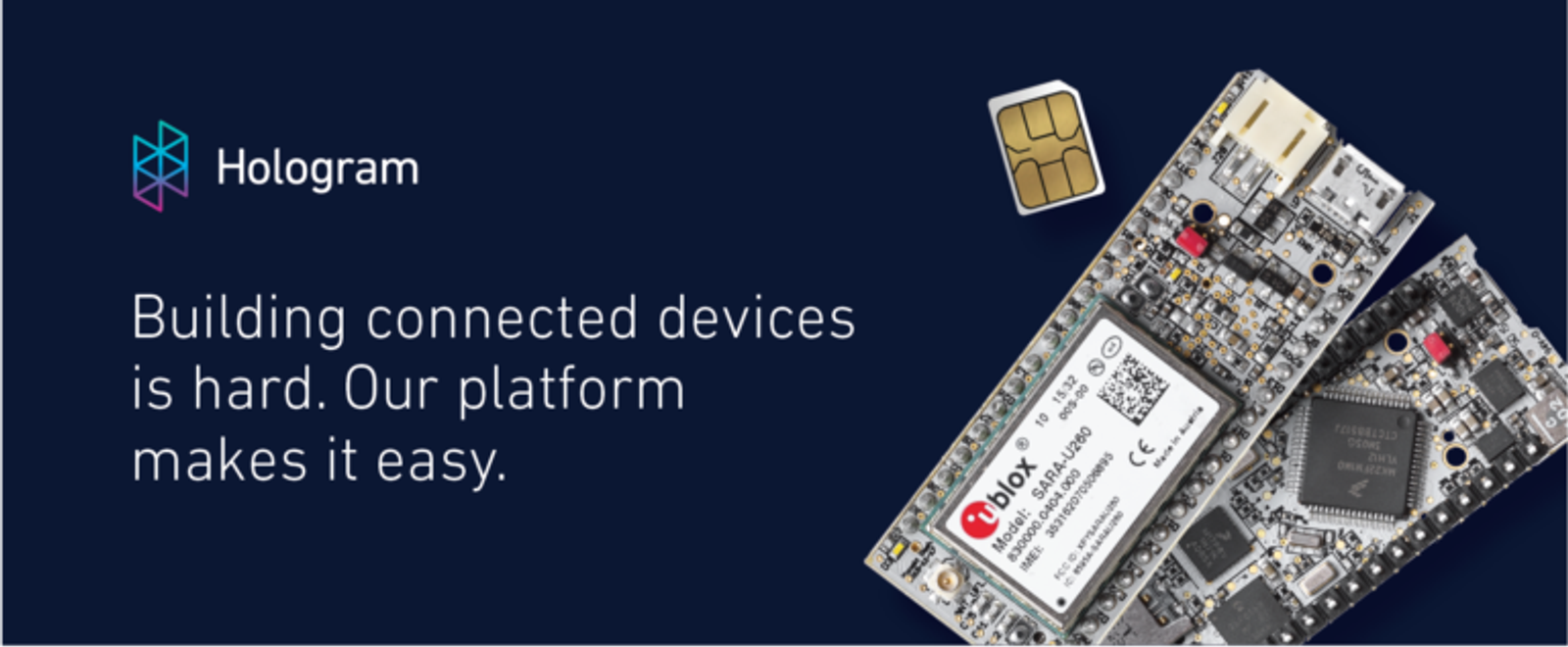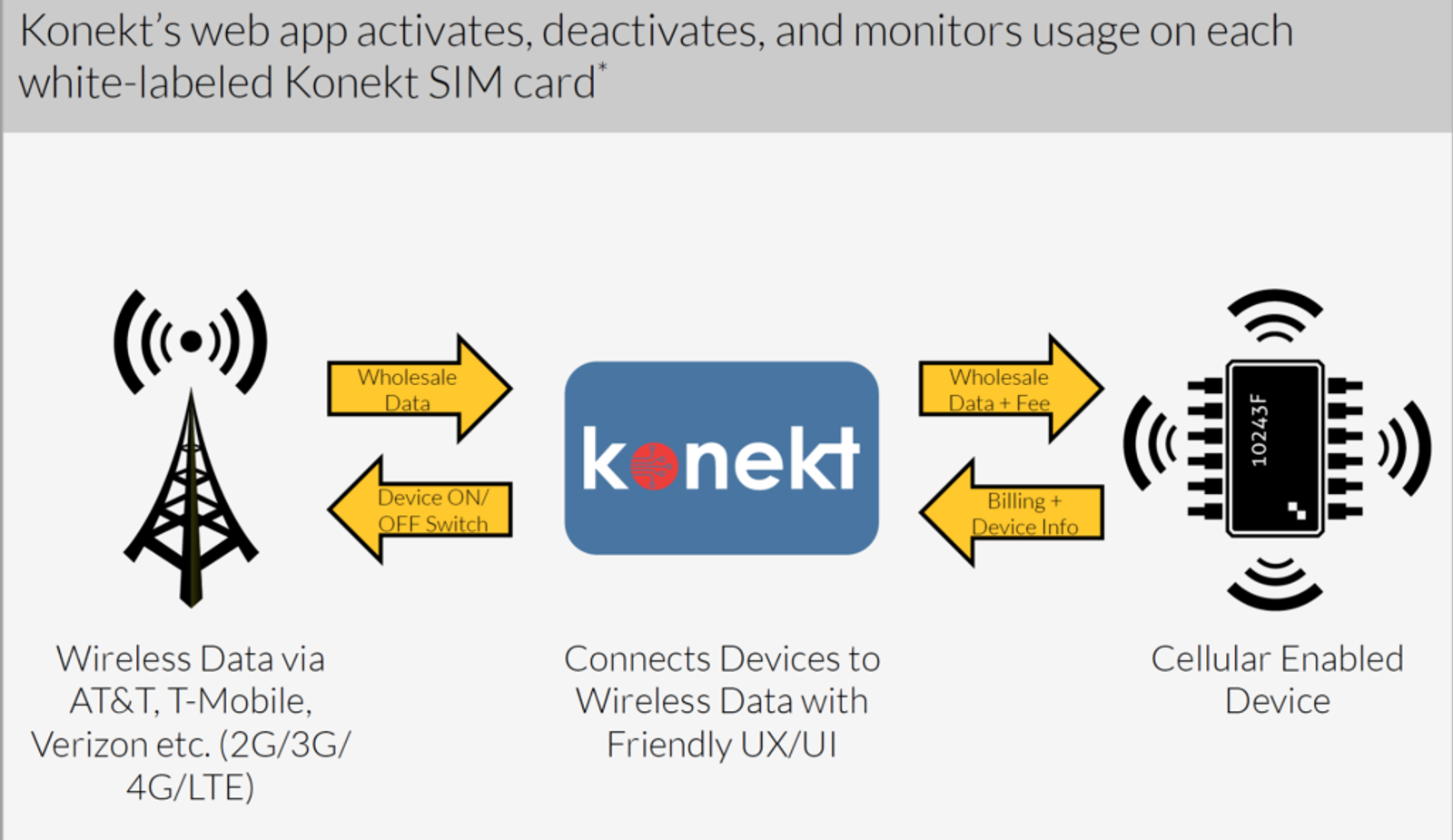Konekt is now Hologram - A Cellular Platform for the Internet of Things

Konekt is now Hologram - A Cellular Platform for the Internet of Things
Today is a big day for us at Konekt, as well as our customers and community. Konekt is now Hologram.
You’re about to find out why we changed our name to Hologram. Before we dive into that, it’s probably useful to go through some history about the name Konekt, and how we got started in the first place.
So what do you guys do, exactly?
A brief history of Konekt
People ask us what we do, all the time. As we’ve grown the team and built more technology that answer has shifted a bit, but the core answer has been the same: We help connect devices to the internet. Specifically we do this via cellular.In 2013 I started doing this solo. I was fresh off my experience building the online food delivery platform, Foodpanda, in Singapore and was looking to start a company that I could call my own - outside of the clutches of the infamous Samwer brothers.
While at Foodpanda I had built some GPRS printers that allowed food orders to go directly from our website to the restaurant. This was pretty cool and allowed us to drive a lot of operational efficiencies. But you know what wasn’t cool? Obtaining and managing our cellular connectivity. All the services we tried had terrible customer support, user interfaces straight out of 1998, and poor/non-existent APIs.

Actually photo of typical M2M Cellular User Interface ;)[/caption]I thought I could do better. And with the Internet of Things poised to be a gigantic and fast growing market, how could I lose? Surely I would just get this platform setup, run some online ads and mint money. Piece of cake, right?And so, Konekt was born. From the start I had concerns about the name. The K’s, the misspelling, the unfortunate (VERY NSFW) connotations in Malaysia, the various other companies with misspelled versions of Connect as their name, and so on. But, on the the other hand, naming companies is pretty hard, and Konekt seemed reasonable enough. Besides, we could always “change it later”.
Growing pains
Startups are hard, as it turns out
So, now we had this name, and this company, and some carrier deals. We were selling SIM cards and doing all the things that don’t scale, or whatever. I was cold emailing people like crazy, and literally going to the post office everyday to send out sample SIMs. This was all well and good, but then people started asking us: what’s next? How do I get this stuff to talk to the web? What hardware should I use?It was around this time that Pat Wilbur joined as CTO. As a counterpoint to my operational experience Pat has incredibly deep telco and systems architecture experience. In response to these questions from our customers he started to build out something called the “Cloud Services Router”.The idea was simple, using our APIs you would just send your data to the cloud and then route it wherever you want. This wasn’t that novel within and of itself, but nothing really existed to do this that focused specifically on the challenges associated with cellular connectivity (of which there are many).As we started building this three things became abundantly clear:
- Even our best attempts at an MVP were not remotely successful at getting larger customers (or, let's face it, even smaller customers) on board.
- In order to build something that was truly useful for folks trying to build cellular connected devices, we were going to have to work with and maintain a truly mind boggling stack - from cell tower to bare metal.
- The two of us could not do this alone. We needed more engineers, we needed an actual team.
Becoming a platform
The birth of the Dash. Cellular for Everything.
Faced with the above challenges, I did what any insane rational person would do; started fundraising. I could write a whole post on the process, but in the interest of time, let's just fast forward to the fun part. We raised $1.3mm and got to work building out our platform.

Very rare screenshot of the original Konekt investor deck[/caption]At the time we thought we could get away with not building hardware, but as time went on it became increasingly clear that hardware was key to improving time-to-value for developers. Also, building our own hardware forced us to consider (and solve) many of the key end-to-end problems with cellular, including how to update device firmware remotely and how to handle power management for notoriously power hungry cellular modems.We ran a Kickstarter campaign and made a cool video. In general, people seemed to be pretty stoked on what we were doing. Then a couple things happened that we didn’t quite expect.The first was volume of interest we were getting. Our Kickstarter was small but it was big enough that we started to get volume requests for large quantities of Dashes and SIMs. This happened somewhat early on, when the Dash was just a prototype, and hit us a bit by surprise. The second was the type of interest we were getting. As it turns out, there are a lot of very large companies that are still trying to figure out IoT, and the Dash scratched a very meaningful itch.
Konekt is now Hologram - A Cellular Platform for the Internet of Things
What’s in a name, anyways?
And this is the story of all startups, in theory as least. Its super cheesy but The Martian provides a great lens through which to view all this. When you start a company you're basically trapped on a desolate planet with very little in the way of resources. So, you get to work solving the problems in front of you. If you solve enough problems you get to do all the really fun things, like building a team and creating product that changes the way the world works. You might even make some money along the way.Throughout all our trials and tribulations we learned that the major failure of all current cellular solutions is that they are, almost exclusively, antiquated and piecemeal. You get a SIM card here, integrate with a cloud there, read some book from the 80s to figure out how the hell cellular networks work, learn how to write AT commands, figure out certification, and so on. It’s a nightmare.

Cellular is Hard! Hologram is our attempt to solve this. It unifies all the technology we’ve developed over the past 2.5 years into one cohesive platform that allow you to get your device data back to the internet and then actually make it useful.We chose the name Hologram for a couple reasons: It refers to the sort of magical, ethereal concept of data floating through the air. Creating meaning where there originally was none. It’s a play on the other forms of communication such as mailgram or telegram, with Hologram being the most advanced; and, perhaps most importantly, we don’t really see ourselves as a “capital B” Brand. We are a platform that enables YOU to build products and brands. As such our name needs to be somewhat descriptive and easy to remember, but then just get out of the way so you can go about creating YOUR brand.
Now what?
We are just getting started
Currently you can do some neat things with Hologram such as:
- Connect: use our cloud-friendly cellular network to connect any device to the internet cheaply and easily.
- Interact: use our software to talk to your device and route your incoming and outgoing messages, all via a secure and scalable API.
- Build: use our cellular development kit, the Dash, to create a new connected device in minutes.
- Manage: use our management tools to see your devices and update their software wirelessly.
As we move forward we'll be building all sorts of great new features and products that make it easier for you to get your data from the field back the internet and then make that data useful.You can expect to see changes in our platform to reflect the new name over the next few weeks. You can now find us at hologram.io and our API is available at hologram.io/docs (although the old API at Konekt API will still work for quite some time). We'll be switching our Facebook/Twitter/Github/etc. accounts over shortly. Also, we'll be sure to give you plenty of advanced notice when we're deprecating old things in the software.If you're using one of our SIM cards, then don't fret; nothing will actually change for you except our name :)
From all of us at Hologram, thank you so much for your support. It's been a great journey so far, and we are just getting started...
Are you a hardware manufacturer interested in learning about going cellular?
Contact us at sales@hologram.io.